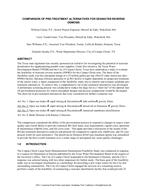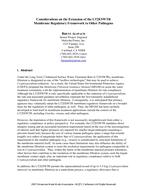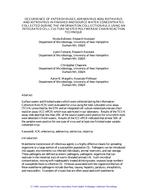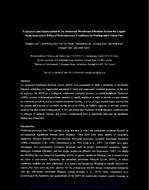The state-of-the-art in large-scale seawater desalination is reverse osmosis (RO). Othertechnologies using thermal techniques, electrodialysis reversal, etc., still have significant drawbacks foruse with the raw water sources available in the Corpus Christi area and are only applicable in nicheapplications. For these reasons, RO was the sole desalination technology considered in this feasibilityanalysis.In terms of pretreatment, however, there are a variety of available technologies. Nonetheless, it is wellunderstood that the RO process requires a high quality feedwater to minimize fouling, maximizemembrane life, minimize pressure drop across the membranes, and to basically provide efficienttreatment. For these reasons, a robust, reliable, and effective pretreatment system is essential. Thus, themain focus of this paper is on the pretreatment alternatives, with specific objectives as follows:to briefly describe advantages and disadvantages of various pretreatment processes;to illustrate the methodology and rationale behind the initial pretreatment selection process andthe development of the short-list of most advantageous pretreatment processes; and,to present cost comparisons (capital, O&M, and 20-year present worth) between the four shortlistedprocesses and to illustrate how pretreatment alternatives may impact overall costs.It should be noted that the pretreatment processes discussed in this paper are commonly usedin drinking water treatment and are increasingly being considered for providing RO pretreatment.Alternatives 1 and 2 are classified as conventional treatment, Alternative 3 is classified as a dual membranesystem, and Alternative 4 is an in-situ, combined intake/pretreatment approach. Because theconceptual design of the RO system was the same for all four alternatives, and because Alternatives 1, 2,and 3 are based on a common intake method and common intake cost, the capital cost differencesbetween Alternatives 1, 2, and 3 are influenced only by the pretreatment system inherent to eachconceptual design. Alternative 4, on the other hand, is different by virtue of the intake method. Therefore,this analysis not only allows for a comparison between pretreatment methods, but also allows for a costcomparison between open sea intakes versus bank filtration. Includes 10 references, tables, figures.





